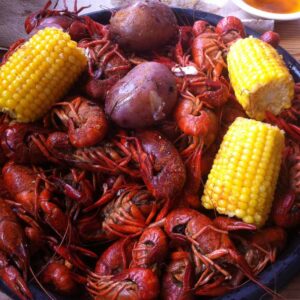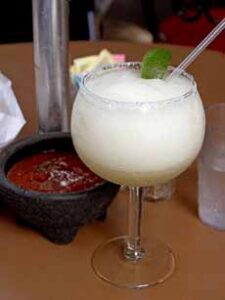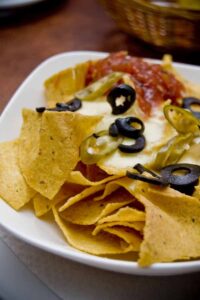A culinary competition between the South’s beloved comfort foods and spicy regional cuisines.
From Humble Roots to Global Cuisine

Cajun
In the early 1600s, the Acadians left France and settled in what is Canada today. In 1755, about 14,000 of them were deported, as they refused to pledge allegiance to the British king. Many migrated to Louisiana, bringing French peasant cooking, but adapted recipes with regional ingredients such as shrimp, oysters, alligator, crawfish and wildlife from the swamps and Gulf of Mexico. Over time, Spanish, Native American and African people influenced Cajun dishes.
Tex-Mex
“Tex-Mex” first entered the English language in the 1870s as the nickname for the Texas Mexican Railway, and by the 1920s, both the train and Tejanos (Texans of Mexican descent) were called Tex-Mex. It began in the Rio Grande Valley, which had a big Mexican population and cattle industry that inspired fajitas and tacos al carbon. In the 1870s, women called Chili Queens served chili con carne to San Antonio tourists who spread the recipe across the country.
Essential Elements in Every Kitchen
Cajun
The Holy Trinity of Cajun flavor is blessed by onion, celery and green bell pepper. A big pot is essential for a crawfish boil. And it’s hard to imagine a Cajun kitchen without spices, andouille sausage, chicken, fresh seafood, okra and rice to make bowls of jambalaya and gumbo.
Tex-Mex
Elements of Tex-Mex food that separate it from Mexican cuisine are yellow cheese, wheat flour and cumin. If a dish uses black beans instead of pinto beans, it is Tex-Mex, not Mexican. A cook would be hard pressed to make a meal without corn, tomatoes, onions or avocados.
Celebrate the People & Events

Cajun
When Hank Williams’ song Jambalaya praised “jambalaya and a crawfish pie and file gumbo,” everyone wanted a taste of Cajun. Thanks to famed chefs such as Paul Prudhomme and Emeril Lagasse sharing secrets of the cuisine, everyone can give it a try, especially during Mardi Gras when recipes come out for everything from classic Cajun treats to muffulettas and turducken (a three-bird roast of deboned chicken and duck stuffed in a turkey).
Tex-Mex
In the 1930s, an Oaxacan immigrant created Fritos and convinced Frito-Lay Co. to mass produce them. In the 1950s, a maître d’ named Ignacio Anaya invented nachos when guests came to his restaurant, but the chef was out. He tossed tortilla chips topped with cheese and jalapeno peppers on a platter, and the dish was born. In 1971, Mariano’s Mexican Cuisine Restaurant in Dallas debuted the first frozen margarita machine.
Best Bites in the Region

Cajun
Commander’s Palace (est. 1893) is a must-visit place for old New Orleans elegant dining, and since the 1940s, Felix’s Restaurant & Oyster Bar has been a casual French Quarter staple. Other noteworthy eateries include Brigtsen’s Restaurant, Bon Ton Café, K-Paul’s Louisiana Kitchen, Mulate’s and Jacques-Imo’s Café.
Tex-Mex
Some present mariachi bands; others dish up family-style meals, but you can’t go wrong at any of these outstanding Tex-Mex restaurants: El Tejavan in Amarillo, Fonda San Miguel in Austin, The Original Ninfa’s and Hugo’s in Houston, and Mi Tierra Café and the Original Blanco Cafe in San Antonio.





